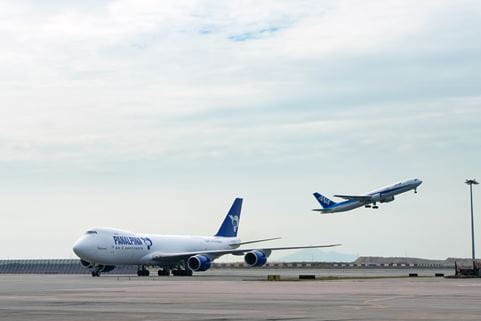2017, the year when air freight took to new heights
2017 has been an exceptional year for air freight. The market has developed a new dynamic characterized by tight transport capacity and high freight rates. Panalpina’s early prediction of a very busy peak season in the last quarter turned out to be correct. In October, Panalpina recorded its highest ever monthly Air Freight volumes, a record that was beaten only one month later in November.

2017 has been an exceptional year for air freight. The market has developed a new dynamic characterized by tight transport capacity and sustained high freight rates. Summer was anything but the usual calm and Panalpina’s early prediction of a very busy peak season in the last quarter turned out to be correct. In October, Panalpina recorded its highest ever monthly Air Freight volumes, a record that was beaten only one month later in November, as the latest figures show.
Speaking to Lloyd’s Loading List last month, Panalpina’s global head of Air Freight, Lucas Kuehner, shared his insights into the current state of the air freight market, touching upon such diverse topics as capacity scarcity (vs. capacity shortage), Panalpina’s Charter Network, trade lane growth, European airports at their limit, and ‘heavy’ air freight being pushed aside by e-commerce.
Trade journalists Stuart Todd turned the conversation with Kuehner into three articles that were published on Lloyd’s Loading List in late November and early December:
E-commerce ‘a challenge and opportunity for air freight’ (December 4, 2017)
“E-commerce is certainly swelling peak season demand this year and accommodating it into airborne trade flows, week in week out, is one of the major challenges facing the industry today.”
Peak season air freight rates set to remain high (November 29, 2017)
“There’s no reason why the current challenges will go away. I think the air cargo community − shippers, airlines, forwarders − have to get used to a market environment where capacity is scarce and at its limit, at least for several more weeks, probably months.”
Air freight capacity ‘scarcity’ continuing (November 27, 2017)
“The available aircraft are there and being deployed and flying record hours to meet demand. But the entire system is reaching its ‘natural’ limits. Demand is overwhelming right now and freighter and belly capacity is being thrown in from all sides and aircraft, including our own, are clocking up extremely high flying hours.”
Kuehner also brought up the unsatisfactory situation at Europe’s airports, where ground handling infrastructure is “bursting at the seams”, especially in Frankfurt, London Heathrow and Luxembourg.
Peak season update
“At least there seem to be no new strikes looming in Frankfurt,” says Kuehner. As for the peak season, there is no sign of a slow-down as yet. Between Asia and Europe, and between Asia and the Americas, demand for air freight is still very high in both directions. Outbound Europe to Asia and the Americas in particular, demand is enormously high and there is hardly any capacity left. The situation is similar for flights to Latin America from Asia, where capacity is almost not available anymore. “On a first-come, first-served basis, we still offer express solutions, of course. The only route where things have slowed down a little is on the Transpacific, from Asia to the US, but it is too early to tell. In any case, we remain alert and agile, just as we have all year through,” says Kuehner.
